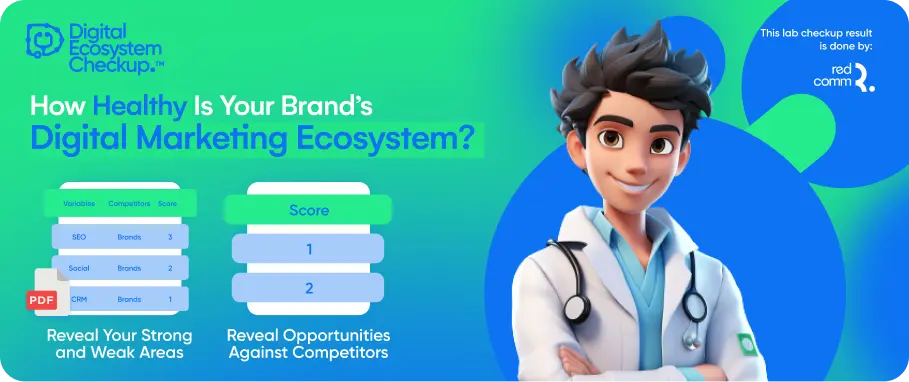Digital marketing isn’t just an option—it’s essential. Our devices consume our attention, and savvy businesses capitalize on that, reaching potential customers where they spend the most time. Ready to craft a winning digital strategy that delivers sales and drives revenue?
Crafting a Winning Digital Marketing Strategy

What Exactly is a Digital Marketing Strategy?
A digital marketing strategy is your game plan for reaching customers online. It’s how you grow your brand and smash revenue goals using platforms like search engines, websites, and social media. Think of it as a roadmap, outlining your path to success through strategic, targeted actions.
The Power of Digital Strategy in 2024
Without a solid digital strategy, your business could be left in the dust. In a landscape where competitors are constantly vying for attention, you need to stand out with a thoughtful plan that engages your audience and fuels growth.
Market Share: The First Piece of the Puzzle
Understanding your market is everything. A clear strategy reveals the demand for your products and keeps you informed about competitors. Without it, you're guessing, and in 2024, guessing is risky. Data-backed decisions will give you the edge you need.
Don’t Let Competitors Outshine You
In the fast-paced digital world, if you don’t keep up, you fall behind. Competitors with strong digital strategies are gaining ground while you could be missing out on valuable customers. Keep your digital marketing strategy sharp and stay ahead.
Develop a Value Proposition That Clicks
Customers today want seamless online experiences. A strong digital marketing strategy includes crafting a value proposition that speaks to your target audience. Whether it’s price, ease of use, or quality, customers should know why your brand stands out from the rest.
Know Your Audience Inside Out
How well do you know your customers? Feedback tools and market surveys are crucial components of any digital strategy. The more you understand your audience, the better you can tailor your marketing efforts to meet their needs.
Stay Agile in a Crowded Market
The digital landscape shifts fast. Brands that adapt stay ahead of competitors by constantly tweaking their strategies to align with customer desires. A flexible digital marketing strategy ensures you stay nimble and ready to pivot when needed.
Digital Strategy vs. Campaign: Know the Difference
It’s easy to mix up the terms, but a digital marketing strategy is your overall plan, while a campaign is the execution of that plan. One strategy may have multiple campaigns running across platforms, all working towards the same goal.
Strategy vs. Tactics: A Quick Breakdown
Tactics are the steps you take to implement your digital marketing strategy. Whether it’s an influencer outreach or a targeted ad, tactics bring your strategy to life. Each tactic should support the broader goals of your marketing efforts.
Building Your 2024 Digital Marketing Strategy: Step-by-Step
Ready to dive into building your strategy? Follow these 10 steps to ensure your digital marketing efforts are impactful and deliver results.
To build a successful strategy, follow these steps:
1. Write a Customer Persona
A customer persona is a fictional representation of your ideal customer. The more detailed, the better. Consider aspects such as age, profession, and pain points to tailor your marketing approach to specific customer needs.
2. Identify Clear Goals
Your goals should align with your business objectives and be measurable. For instance, if you want to grow brand awareness, a good goal might be to generate 100,000 impressions in a month through targeted ads. Use tools like Google Analytics to measure progress and optimize as needed.
3. Create Relevant Content
Content is king in digital marketing. Whether through blog posts, videos, or social media updates, consistent, valuable content keeps your audience engaged. Develop a content calendar to ensure a steady flow of information that aligns with your strategy.
4. Audit Your Digital Channels
Review your current digital marketing channels to assess their effectiveness. Are you seeing the results you expected? If not, consider refining your approach or reallocating resources to higher-performing areas.
5. Automate Where Possible
Automation tools can help streamline repetitive tasks, such as posting on social media or sending email campaigns. By using platforms that automate content distribution, you free up time to focus on more strategic initiatives.
6. Optimize for Mobile
With many consumers accessing websites on their phones, it’s critical that your marketing efforts are mobile-friendly. Ensure your website loads quickly, is user-friendly, and is optimized for mobile devices. Google prioritizes mobile-responsive sites, which can improve your search rankings.
7. Make It Easy for Customers To Connect
Your target market will have questions, and a quick response can be the difference between a sale or a missed opportunity. Ensure that you are easily reachable on social media, email, and your website.
8. Leverage Technology
The right technology can streamline your digital marketing efforts. From CRM tools to automation software, these technologies help reduce manual work, so you can focus on driving business growth.
9. Highlight Your Unique Selling Proposition
What makes your business different from your competitors? Ensure your digital marketing strategy highlights your unique selling proposition (USP) so customers know why they should choose you.
10. Track and Measure Success
It’s essential to monitor the success of your digital marketing strategy. By tracking metrics such as click-through rates, conversion rates, and engagement, you can adjust your approach for maximum effectiveness.
Conclusion:
The world of digital marketing evolves rapidly. With the right strategy, you can outpace competitors and captivate your target audience. It’s time to focus, optimize, and succeed in 2024’s digital landscape.
DISCOVER MORE OF WHAT MATTERS TO YOU
RELATED TOPIC



